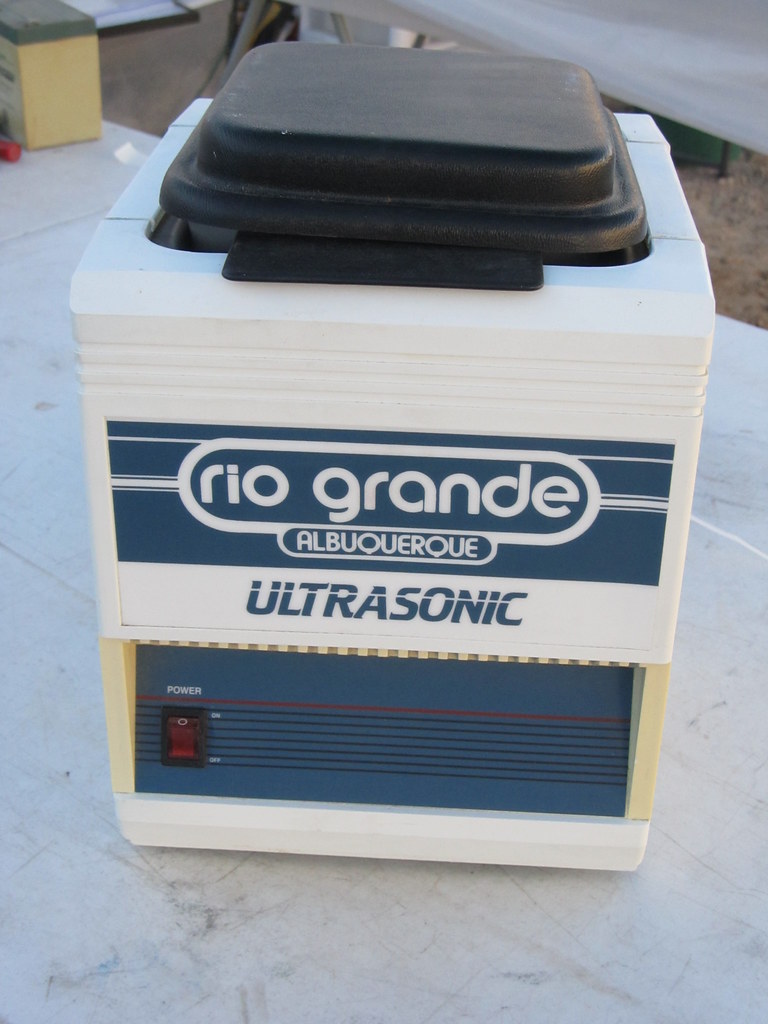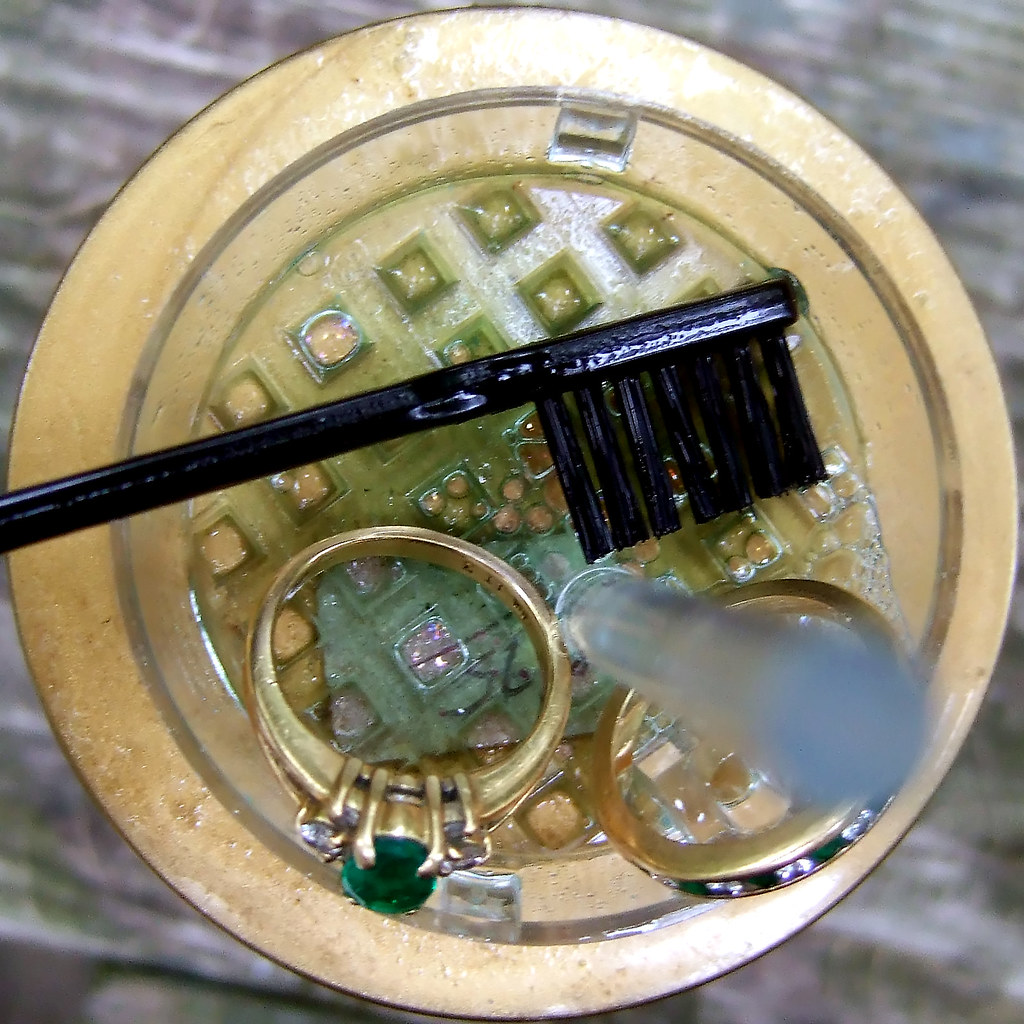Like all jewelry, an engagement ring needs some upkeep to continue looking beautiful. One of these tasks is learning how to clean an engagement ring. There are many ways to clean an engagement ring, but some ways can damage certain stones or settings. This guide to clean an engagement ring will make sure you know how to take care of your ring without damaging it.
Cleaning Jewelry Using Machine Cleaners
Jewelry steam cleaners and ultrasonic cleaners are two of the most commonly used devices, both in professional jewelry stores and at home.
Jewelry Steam Cleaners
Jewelry steam cleaners use high-pressure steam to remove dirt, oil, and residue from engagement rings. The steam effectively reaches into small crevices, ensuring a thorough clean.
Jewelry steam cleaning is best for diamonds, sapphires, rubies, and other hard gemstones on the Mohs scale. Steam cleaning is not recommended for porous stones like opals, turquoise, or pearls. Vintage or antique rings with fragile settings may also be at risk.
Jewelry steam cleaners can be expensive too. Some machines range from $50 to $500, depending on the size and power. Maintenance includes refilling distilled water, which costs about $1–$2 per gallon.
Jewelry Ultrasonic Cleaners
Ultrasonic cleaners use high-frequency sound waves to create tiny bubbles that loosen grime and dirt from jewelry. This method is effective for intricate ring designs.
Jewelry ultrasonic cleaners should be used on hard, durable stones like diamonds and sapphires. Like jewelry steam cleaners, more delicate stones can crack or scratch. Emeralds are known for having lots of inclusions and should not be used in these either. The vibrations of an ultrasonic jewelry cleaner can also loosen settings over time, especially in older rings.
Ultrasonic jewelry cleaner prices range from $30 to $300, depending on capacity and features. Special cleaning solutions designed for jewelry cost around $10–$25 per bottle, with most lasting several months.

Commercial Jewelry Cleaning Solutions
For those who prefer a simple, at-home cleaning solution, commercial jewelry cleaners available in retail stores are an excellent option. These liquid solutions are designed to dissolve grime and restore the shine of your engagement ring. However, it’s crucial to choose the right cleaner for your ring’s metal and gemstone.
Gold Jewelry Cleaning Solution
Gold and silver cleaners are formulated differently to suit the unique properties of each metal. Gold cleaners are designed for the softness and warmth of gold. They contain gentle agents that remove tarnish and dirt without scratching. Gold cleaners can be used for yellow gold, white gold, and rose gold engagement rings. You should avoid using gold cleaners on silver or platinum. They may not be effective and could potentially damage the finish.
Silver Jewelry Cleaning Solution
Silver jewelry cleaning solutions are specifically made to remove tarnish caused by oxidation on silver jewelry. They contain stronger chemicals to address tarnishing unique to silver jewelry. Silver cleaning solution works best on sterling silver or fine silver rings. Don’t use silver cleaning solution on gold or plated jewelry. It may strip the plating and cause discoloration. Likewise, you need to avoid dipping silver engagement rings and jewelry with enameling or antique finishing. Silver cleaner has been known to strip that too, including rhodium as well.

How to Identify Engagement Ring Metals
If you’re going to use a jewelry cleaning solution, it’s important to understand your engagement ring metal.
- Gold: Look for karat stamps such as “10K,” “14K,” or “18K.” Gold is usually yellow but can also be white or rose-hued.
- Silver: Most silver rings are stamped with “925” or “Sterling,” indicating 92.5% silver content. Silver tends to tarnish more than other metals.
- Platinum: Platinum is dense, with a bright white hue and stamps like “PT950” or “PLAT.” It doesn’t tarnish like silver.
- Other Metals: Rings made from titanium, tungsten, or stainless steel often have unique markings. Consult your jeweler for specifics.
When using commercial cleaners, make sure to follow the instructions on the packaging. Testing a small area first is a good idea too. If you’re unsure about your ring’s materials, consult a professional jeweler before using any cleaner.
The Best Way to Clean an Engagement Ring and Other Jewelry
There is a much easier way to learn how to clean an engagement ring and it will cost you next to nothing. You will need a soft-bristled brush (like a toothbrush) and a mixture of lukewarm water and mild soap. Dawn dish soap will do fine. Remember, it cleans baby ducks too.
Though soap and water aren’t extravagant, it will get the job done for any metal. You don’t have to worry about identifying your metal or damaging your stones. Use the toothbrush bristles to gently clean away any dirt. The bristles are useful for getting dirt out of different channels and spaces within the ring.
If your engagement ring is especially dirty, you can soak it in water for 20 minutes and then brush the dirt away. If you have other gemstones in your engagement ring, just make sure the stone is okay to be submerged, because not every gemstone can sit in water for an extended amount of time.
Cleaning Engagement Rings at AW Jewelry
At AW Jewelry, we offer professional cleaning and restoration services for your engagement ring. This service goes beyond simply cleaning dirt out of your ring. Our jewelry restoration service includes professional cleaning, polishing, and rhodium plating.
We will also check prongs and stones, ensuring your jewelry is restored to its former glory. We can even do this with engagement rings not purchased from us, including antique and heirloom engagement rings.
To inquire about our restoration and cleaning services, please send us a message. To learn more about our cleaning and repair services, check out our Jewelry Repair page here.
